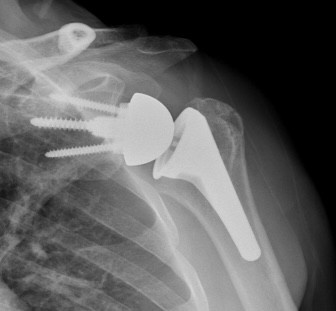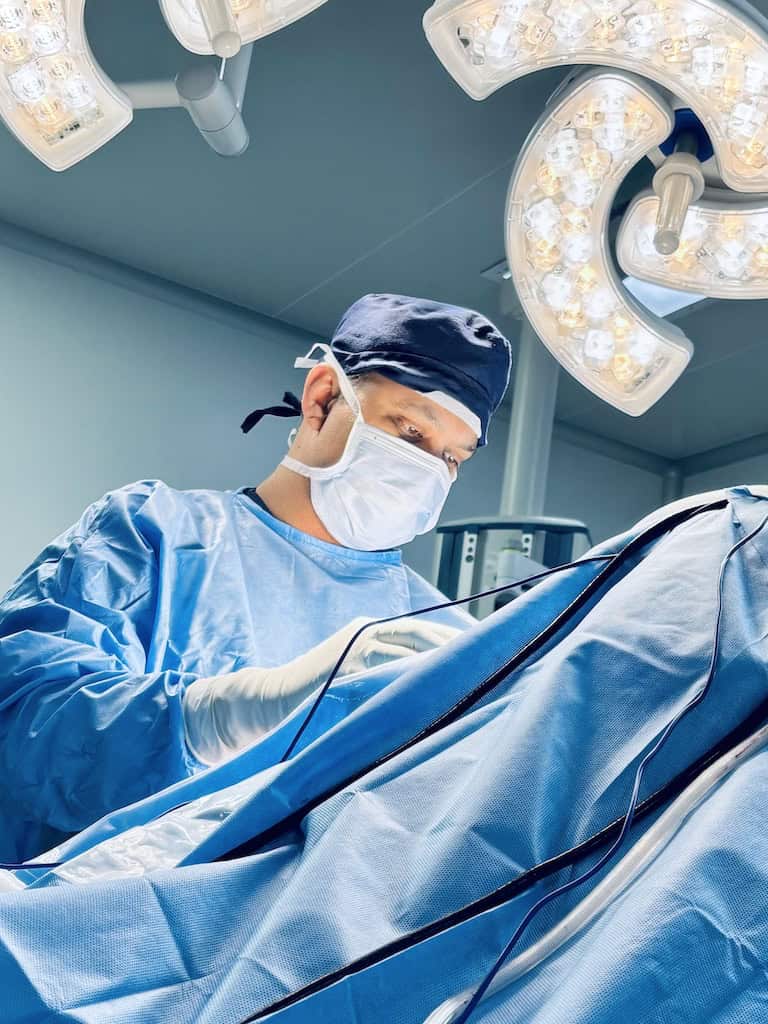Shoulder Replacement Surgery
The shoulder joint is a ball and socket joint between the top of the arm bone (humeral head) and the shoulder blade (glenoid). Any disease affecting the joint causes pain, weakness and restricted movement.
Shoulder replacement surgery, also called shoulder arthroplasty, involves removal of damaged portion of bone and replacement with implants made of metal and plastic.
It can be either partial or total shoulder replacement using either anatomic or reverse implants.

Types of Shoulder Replacement procedures
Based on the type of damage to the joint and surrounding muscles, your specialist will propose one of the following options:
-
- Anatomic Total Shoulder Replacement – Your surgeon will remove both damaged parts of the joint (humerus head and glenoid) and replace with the artificial implants retaining the normal ball and socket orientation of the joint.
- Reverse Total Shoulder Replacement –Reverse shoulder replacement is a commonly performed procedure where normal anatomical orientation of the ball and socket joint is reversed to socket and ball orientation providing satisfactory function in a rotator cuff deficient shoulder. Here, your surgeon will remove both parts of the joint and attach ball to the shoulder blade and socket to the upper arm bone.
- Hemiarthroplasty –It is an open procedure where one part (humerus) of the shoulder joint is replaced with a synthetic implant (metal or pyrocarbon).
Which Conditions Necessitate Shoulder Replacement
Shoulder replacement surgery is performed for damaged joint due to following conditions :
- Osteoarthritis – also known as age-related arthritis, it refers to destruction of the joint with loss of a specialized structure known as cartilage in the joint. It usually causes pain of varying severity, swelling, difficulty in movement, and limits function of that joint.
- Rotator Cuff Tear – The rotator cuff is a group of four tendons wrapped around the shoulder joint like a cuff. The tear in the rotator cuff tendon can happen following an injury, or can be related to wear and tear. It causes pain, restricted movement and weakness in the shoulder joint. It can sometimes cause arthritis (rotator cuff arthropathy).
- Proximal Humerus Fractures –A break in the upper part of humerus bone (proximal humerus fracture) is a common injury which can occur as a result of simple fall (in elderly patients), or an accident or sports related injury. It may need replacement surgery if not fixable or if the primary fixation has failed.
- Trauma Sequalae – A malunited fracture in the upper part of arm bone may necessitate replacement surgery in order to improve pain and function.
- Inflammatory arthritis – The inflammation in the joint in cases such as rheumatoid arthritis causes gradual loss of cartilage and destruction of the joint.
- Avascular necrosis –The gradual interruption in blood flow to the humeral head causes pain and gradual collapse causing arthritis.

Clinical Pathway
- You will be seen by the specialist in outpatient department for clinical evaluation.
- You will be asked certain questions related to your symptoms and examined thoroughly.
- Your investigations such as X-ray, MRI or CT scan will be reviewed, following which a surgical plan of shoulder replacement will be made.
- A detailed explanation will be given to you with regards to surgery along with its pros and cons.
- You will be seen by the anesthetic team
- Your fitness for surgery will be evaluated.
- Investigations including blood tests will be carried out.
- A physical therapist will explain you with regarding to the post op precautions, exercises and immobilization.
- You will be admitted on the day of surgery in the morning. The surgery will be performed under general and regional anesthesia.
- After surgery, you will be under certain medication to control your post operative pain to make you comfortable.
- You will be discharged the next day with post operative instructions.
- Your physical therapy will be started on the next day after surgery and will continue for around three months.
- You will be required to see the specialist in outpatient clinic on couple of occasions to assess the recovery. You were expected to recover completely in approximately three to six months.






